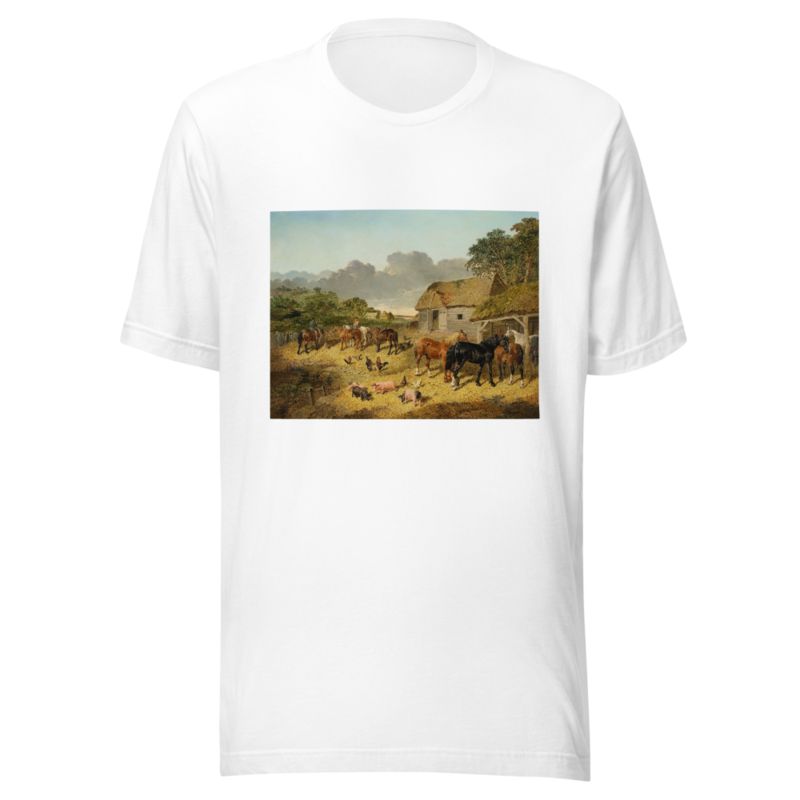Description
Horses Drinking from a Water Trough with Pigs and Chickens in a Farmyard by John Frederick Herring Jr. printed on a T-Shirt
About the T-Shirt
Regular fit
Standard length, the fabric easily gives into movement
Casual wear
A classic, everyday option loved by our customers
Side-seamed
Constructed by sewing two parts together, creating a fitted look
The Unisex Staple T-Shirt feels soft and light with just the right amount of stretch. It’s comfortable and flattering for all. We can’t compliment this shirt enough–it’s one of our crowd favorites, and it’s sure to be your next favorite too!
- Solid colors are 100% Airlume combed and ring-spun cotton
- Ash color is 99% combed and ring-spun cotton, 1% polyester
- Heather colors are 52% combed and ring-spun cotton, 48% polyester
- Athletic and Black Heather are 90% combed and ring-spun cotton, 10% polyester
- Heather Prism colors are 99% combed and ring-spun cotton, 1% polyester
- Fabric weight: 4.2 oz./yd.² (142 g/m²)
- Pre-shrunk fabric
- 30 singles
- Side-seamed construction
- Tear-away label
- Shoulder-to-shoulder taping
- Blank product sourced from Nicaragua, Mexico, Honduras, or the US
John Frederick Herring Jr. (1820-1907)
John Frederick Herring Jr. was an English painter who is best known for his equine art.
John F. Herring Jr. was born in Doncaster, then in the West Riding of Yorkshire c.1820, to the well-known 19th-century artist John Frederick Herring Sr. (1795–1865), who at the time, was considered one of England’s great Sporting and Equestrian artists, patronized by the English aristocracy. The father’s mastery of the brush, and popularity with the nobility, served his son, Herring Jr., well. Early on, Herring Jr. was exposed to fine painting and wealthy patrons.
Recent reference books state that Herring Sr.’s first child was named “John Frederick Herring Jr.” and was born on 21 June 1815, later baptized on 22 October 1815. However, another child was born in 1820 and also named “John Frederick Herring Jr.” (baptized in 1821). The assumption is that the first Herring child died and the second, born in 1820, is the artist we know of today.
Herring developed a love for painting, a passion also shared by his brothers Charles and Benjamin. Three of the four brothers became artists, painting in the same style as their father, often collaborating on a single painting.
In the years after 1836, Herring Sr., feeling threatened by the teenage Herring’s ability and growing popularity, began incorporating the tag “SR” at the end of his signature.
Herring continued painting, in the tradition of his father, the sporting and animal pictures; however, as his artistic prowess improved, his style changed: he loosened his brushwork and widened his landscape views. The placement of farm animals along the banks of a stream or within a farmyard were characteristic of Herring’s work.






Reviews
There are no reviews yet.